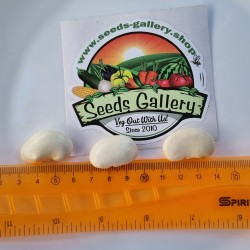
Variety from Japan
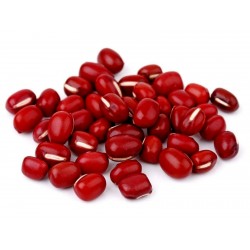
Azuki fasulyesi tohumu...
Fiyat
€1,75
SKU: VE 73 (4g)
Seeds Gallery Com,
5/
5
<h2><strong>Azuki fasulyesi tohumu (Vigna angularis)</strong></h2>
<h2><span style="color: #ff0000;" class=""><strong>20 (4g) tohum paketi için fiyat.</strong></span></h2>
<p><b>Fasülye</b><span> ( </span><i>Vigna angularis</i><span> ; dan </span><i>Azuki<span> </span></i><span>( Japon : <span lang="ja">アズキ( 小豆 )</span> )</span><span> , bazen çevirilir </span><b>Azuki</b><span> ya </span><b>Aduki</b><span> veya </span>İngiliz<span> </span><span></span><b>kırmızı<span> </span>maş fasulyesi</b><span> ) bir olduğunu </span>, yıllık<span> </span><span></span>asma<span> yaygın boyunca yetiştirilen </span>Doğu Asya<span> ve </span>Himalayalar<span> onun küçük (yaklaşık 5 mm için ) </span>fasulye<span> . </span>Çeşitlerin<span> içinde en tanıdık </span>Kuzeydoğu Asya<span> tek tip olması </span>kırmızı renk<span> ise </span>beyaz<span> , </span>siyah<span> , </span>gri<span> ve çeşitli benekli çeşitleri de bilinmektedir. Bilim adamları tahmin </span><i>Vigna angularis</i><span> Var. </span><i>nipponensis</i><span> atasıdır.</span></p>
<h2><span class="mw-headline" id="Origin_and_diversity">Kökeni ve çeşitlilik</span></h2>
<h3><span class="mw-headline" id="Speciation_and_domestication">Türleşme ve evcilleştirme</span></h3>
<p>Ekili adzuki fasulye yabani atası muhtemelen<span> </span><i>Vigna angularis</i><span> </span>var.<span> </span><i>nipponensis</i><span> </span>Japonya, Kore, Çin, Nepal ve Bhutan dağıldığını,.<span> </span>Türleşme<span> </span>arasında<span> </span><i>Vigna angularis</i><span> </span>Var.<span> </span><i>nipponensis</i><span> </span>ve<span> </span><i>Vigna angularis</i><span> </span>Var.<span> </span><i>angularis</i><span> </span>50,000 yıl önce meydana geldi. Arkeologlar bunun 3000 M.Ö. evcilleştirilmiş tahmin ediyoruz. Ancak, 3000 M.Ö. 2000 M.Ö. kalma adzuki fasulye (yanı sıra soya fasulyesi) hala büyük oranda vahşi boyut aralığında olduğu belirtilmiştir. Büyütülmüş tohumlar daha sonra oluştu<span> </span>Tunç<span> </span>veya<span> </span>Demir Yaş<span> </span>pulluk kullanımı ile, nokta.<span> </span>Evcilleştirilmesi<span> </span>adzuki fasulye verim ve tane boyutu arasında bir değiş-off ile sonuçlanmıştır. Ekili adzuki fasulye daha az sayıda ama daha uzun bölmeleri, az ama daha büyük tohum ve daha kısa boy, aynı zamanda yabani formları daha küçük toplam tohum verimi var. Evcilleştirme kesin yeri bilinmemektedir; (örnek Japonya, Çin ve Kore için) Kuzey Asya'daki çoklu evcilleştirme kökenleri önerilmiştir.</p>
<h3><span class="mw-headline" id="Breeding">üreme</span></h3>
<p>Japonya'da, fasülye bilimsel tabi ilk bitkileri biriydi<span> </span>bitki ıslahının<span> </span>. Önemli ıslah özellikleri verimi, fasulye rengin saflığı ve olgunlaşma süresi vardır. Daha küçük tohumlar ve yüksek biyokütle ile ayırın çeşitlerin için yetiştirilen<span> </span>yem<span> </span>üretimi gibi<span> </span>yeşil gübre<span> </span>. Yerel olarak adapte çeşitlere Çin, Japonya, Kore ve Tayvan'da mevcuttur. 300'den fazla çeşit / yerel çeşitler / ıslah hatları Japonya'da kayıtlıdır.<br>Üstelik Çin (Crop Germplazm Kaynaklar Enstitüsü (CAAS), Pekin, fazla 3700 katılmalar) ve Japonya (Tokachi Agricultural Experiment Station, Hokkaido-ken, yaklaşık 2500 katılmalar) büyük barındırmak<span> </span>germplazm<span> </span>adzuki fasulye koleksiyonları.</p>
<h3><span class="mw-headline" id="Weed_forms">Ot formları</span></h3>
<p>Ot<span> </span>adzuki fasulye formları sıklıkla Japonya'da meydana gelir. Ot formlarının yaygın insan bozukluğu olan habitatları intibak kaynaklanmaktadır eski kaçar<span> </span>çeşitlerin<span> </span>ve çeşitlere ve yabani formları arasındaki melez türevleri doğal kurulması. Ekili adzuki fasulye zararlılar tarafından saldırıya, özellikle de yaban formları aksine, adzuki fasulye ot formları ekili form için bir yedek olarak kullanılır ve tatlı fasulye gibi tükettiler. Ancak, ekili bahçelerde yabani ot biçimi kirlenme olarak tanınan ve adzuki çeşitlerin tohum kalitesini düşürür edilir.</p>
<p>Adı<span> </span><i>adzuki</i><span> </span>(veya<span> </span><i>azuki</i><span> </span>) yerli tercümesidir<span> </span>Japon<span> </span>isim. Japon ayrıca Çinli sahiptir<span> </span>loanword<span> </span>,<span> </span><i>Shozu<span> </span></i><span>( <span lang="ja">小豆</span> )</span><span> </span>"küçük fasulye" anlamına gelir, onun muadili "büyük fasulye"<span> </span><span>( <span lang="ja">大豆</span><i>daizu</i> ) <i></i></span><span>olmak soya . Yazmak için ortaktır <span lang="ja" title="Japon dili metin">小豆</span> içinde Kanji ama telaffuz <i>azuki </i><i><span class="unicode haudio"><span class="fn">dinlemek</span></span></i><i><span class="unicode haudio"><small class="metadata audiolinkinfo"> ( </small></span></i><i><span class="unicode haudio"><small class="metadata audiolinkinfo">yardım</small></span></i><i><span class="unicode haudio"><small class="metadata audiolinkinfo"> · </small></span></i><i><span class="unicode haudio"><small class="metadata audiolinkinfo">bilgi</small></span></i><i><span class="unicode haudio"><small class="metadata audiolinkinfo"> )</small></span></i> , bir örnek <i><i lang="ja-Latn" title="Japanese language text">jukujikun</i></i> . <i><span class="unicode haudio"><span class="fn"><img alt="Bu ses hakkında" src="https://upload.wikimedia.org/wikipedia/commons/thumb/8/8a/Loudspeaker.svg/11px-Loudspeaker.svg.png" width="11" height="11" srcset="//upload.wikimedia.org/wikipedia/commons/thumb/8/8a/Loudspeaker.svg/17px-Loudspeaker.svg.png 1.5x, //upload.wikimedia.org/wikipedia/commons/thumb/8/8a/Loudspeaker.svg/22px-Loudspeaker.svg.png 2x" data-file-width="20" data-file-height="20"></span> <small class="metadata audiolinkinfo"></small></span></i><i><i lang="ja-Latn" title="Japon dili metin"></i></i></span></p>
<p>In<span> </span>Çin<span> </span>, ilgili adı (<span> </span>Çince<span> </span>:<span> </span><span lang="zh">小豆</span><span> </span>;<span> </span>pinyin<span> </span>:<span> </span><i><span lang="zh-Latn-pinyin">xiǎodòu</span></i><span> </span>) hala botanik veya tarımsal deyişiyle kullanılır, ancak, gündelik içinde<span> </span>Çince<span> </span>, daha yaygın terimlerdir<span> </span><i><i lang="zh-Latn" title="Çince dil metni">Hongdou</i></i><span> </span>(<span> </span><span lang="zh">紅豆</span><span> </span>;<span> </span><i><span lang="zh-Latn-pinyin">HONGDOU</span></i><span> </span>) ve<span> </span><i><i lang="zh-Latn" title="Çince dil metni">chidou</i></i><span> </span>(<span> </span><span lang="zh">赤豆</span><span> </span>;<span> </span><i><span lang="zh-Latn-pinyin">chìdòu</span></i><span> </span>), her iki "anlamına<span> </span><b>kırmızı fasulye</b><span> </span>neredeyse tüm Çin çeşitlerin eşit kırmızı, çünkü". Çinli konuların İngilizce tartışmalar terimi "kırmızı fasulye" çoğu (özellikle atıfla kullanılan<span> </span>kırmızı fasulye ezmesi<span> </span>), ancak başka bağlamlarda bu kullanım da kırmızı diğer fasulye karışıklığa neden olabilir. Normal bağlamlarda, "kızıl<span> </span>cowpeas<span> </span>" Bu fasulye başvurmak için kullanılmıştır.</p>
<p>In<span> </span>Kore<span> </span>, adzuki fasulye denir<span> </span><i><i lang="ko-Latn" title="Kore dili metin">pat</i></i><span> </span>(<span> </span><span lang="ko" title="Kore dili metin">팥</span><span> </span>) ve tezat<span> </span><i><i lang="ko-Latn" title="Kore dili metin">Kong</i></i><span> </span>(<span> </span><span lang="ko" title="Kore dili metin">콩</span><span> </span>, daha doğrusu bir tür olarak kabul olmak yerine, "fasulye").<span> </span><i><i lang="ko-Latn" title="Kore dili metin">Kong</i></i><span> </span>elemeleri olmadan ( "fasulye"), genellikle demektir<span> </span>soya fasülyesi<span> </span>.</p>
<p>In<span> </span>Vietnam<span> </span>denir<span> </span><i><i lang="vi" title="Vietnamca dil metni">đầu Djo</i></i><span> </span>(: kırmızı fasulye anlamıyla).</p>
<p>Bazı bölgelerinde<span> </span>Hindistan<span> </span>, "kırmızı chori" olarak adlandırılır. In<span> </span>Pencap<span> </span>denir<span> </span><i><i lang="pa-Latn" title="Pencapça metni">ravaa'n</i></i><span> </span>ve ortak bir madde olduğunu<span> </span>chaat<span> </span>. In<span> </span>Marathi<span> </span>, bu olarak bilinen<span> </span><i><i lang="mr-Latn" title="Marathi dili metin">lal chavali</i></i><span> </span>(<span> </span><span lang="mr" title="Marathi dili metin">लाल चवळी</span><span> </span>anlamıyla 'kırmızı anlamına gelen)<span> </span>börülce<span> </span>'. Irak'ta onun adıdır<span> </span><i><i lang="acm-Latn" title="Mezopotamya Arap dili metin">lūbyā Hamra</i></i><span> </span>(<span> </span><span lang="acm" dir="rtl" title="Mezopotamya Arap dili metin">لوبيا حمراء</span><span> </span>"kırmızı cowpeas" anlamına gelir).</p>
<div></div>
<h2><span class="mw-headline" id="Cultivation">yetiştirme</span></h2>
<h3><span class="mw-headline" id="Area_and_yield">Alan ve verim</span></h3>
<p>Fasülye ağırlıklı olarak Çin (670.000 ha), Japonya (60.000 ha), Güney Kore (25.000 ha) ve Tayvan (15.000 ha) (veri 2006 yayınlanmıştır) yetiştirilmektedir. Fasulye de ABD, Güney Amerika ve Hindistan'da yanı sıra Yeni Zelanda, Kongo ve Angola'da ticari yetiştirilir.<br>Japonya'da, fasülye ikinci en önemli<span> </span>baklagil<span> </span>sonra<span> </span>soya fasulyesi<span> </span>; Bu ürünün 1998 yılı yıllık getirisi yaklaşık 100.000 ton oldu. Yaklaşık 140.000 ton / yıl (veri 2006 yayınlanmıştır) bir tüketimi ile, Japonya da adzuki fasulye en önemli ithalatçısı. İthalat Çin, Kore, Kolombiya, Tayvan, ABD, Tayland ve Kanada'dan alınır.<br>Alan başına fasulye verimleri nedeniyle farklı yetiştirme yoğunluğu geniş bir yayıldı. 4 ila 8 dt / ha tutarlar bildirilen, ancak Japonya ve Çin'de ulaşılır 20 ve 30 dt / ha arasında verir edilmektedir.</p>
<h3><span class="mw-headline" id="Ecological_requirements">Ekolojik şartlar</span></h3>
<p>Adzuki fasulyesi büyümesi için en uygun sıcaklık aralığı 15 ° C ile 30 ° C arasındadır. Bitki soğuk dayanıklı değildir ve burada toprak sıcaklıklarının üstünde, 6-10 ° C (30 ° -34 ° C) optimum ihtiyacı<span> </span>çimlenme<span> </span>. Sıcak sıcaklıklar vejetatif büyümeyi teşvik ve bu nedenle bezelye üretimi için daha az elverişli bulunmaktadır. Fasülye genellikle sulanacak değildir. Yıllık yağış taze fasulye alanlarda 500-1750 mm arasında değişir. Bitki dayanabilir<span> </span>kuraklık<span> </span>ancak verim şiddetli azalma beklenmektedir. Adzuki fasulye yetiştirme pH 5-7.5, tercihen de süzülmüş topraklarda mümkündür. Gübre uygulaması yaygın olarak beklenen verimine bağlı olarak değişir, ancak soya fasulyesi, genel olarak benzerdir. Nedeniyle ile nodülasyonun için<span> </span>Rhizobia<span> </span>azot bağlama<span> </span>100 kg / ha olabilir.</p>
<h3><span class="mw-headline" id="Production">Üretim</span></h3>
<p>Bezelye ekim 30-90 cm mesafe satır 2-3 cm derinlik ve satır içinde 10-45 cm bulunmaktadır. Nadiren tohumlar yayın tarafından ekilir. Tohum miktarı, 8-70 kg / ha arasında değişmektedir. Ekinin büyüme bu nedenle yavaş<span> </span>yabancı ot kontrolü<span> </span>esas çimlenme ve çiçeklenme arasında çok önemlidir. Yetiştirme sistemleri farklı ülkeler arasında büyük ölçüde farklılık göstermektedir. Çin'de fasülye sıklıkla yetişen<span> </span>ara ürünler<span> </span>Japonya'da fasulye yetiştirilir iken mısır, sorgum ve darı ile<span> </span>ekin rotasyonları<span> </span>. Bezelye hasat sürece tohumun nem içeriği% 16 daha yüksek olduğu yapılmamalıdır.</p>
<h3><span class="mw-headline" id="Pests_and_diseases">Zararlılar ve hastalıklar</span></h3>
<p>Adzuki fasulye mantar ve bakteriyel hastalıkları<span> </span>külleme<span> </span>, kahverengi<span> </span>kök çürüğü<span> </span>ve bakteriyel<span> </span>yanıklığı<span> </span>. Dahası, adzuki pod solucan, Japon butterbur sap kurdu ve sıra zararlıları<span> </span>lahana kurdu<span> </span>saldırı kırpma.<span> </span>Fasulye biti<span> </span>önemli olan<span> </span>depolama haşere<span> </span>.</p>
<p>Bitkinin yabani ve kültür formları olduğundan adzuki fasulye tarifi yazarları arasında değişebilir. Fasülye bir olan<span> </span>yıllık<span> </span>, nadiren<span> </span>iki yılda<span> </span>gür dik veya twining ot genellikle 30 ila 90 santimetre yüksekliğinde. Tırmanma veya bitkinin secde biçimi vardır mevcuttur. Kök normalde yeşil ve seyrek kıllı olduğunu.</p>
<h3><span class="mw-headline" id="Roots">kökler</span></h3>
<p>Adzuki fasulyesi bir sahiptir<span> </span>kazık kök<span> </span>, tohum çimlenme alanına 40-50 sm kadar bir derinliğe ulaşabilir kök sisteminin türü.</p>
<h3><span class="mw-headline" id="Leaves">Yapraklar</span></h3>
<p>Adzuki fasulyesi yaprakları olan<span> </span>üç yapraklı<span> </span>,<span> </span>Pinnate<span> </span>ve uzun üzerinde kök birlikte düzenlenir<span> </span>yaprak sapı<span> </span>. Beyannameler oval ve yaklaşık 5-10 cm uzunluğunda ve 5-8 cm genişliğindedir.</p>
<h3><span class="mw-headline" id="Flowers">Çiçekler</span></h3>
<p>Adzuki çiçekler<span> </span>kelebek şeklinde çiçek açan<span> </span>ve parlak sarı.<span> </span>Çiçeklenme<span> </span>bir aksiller yanlıştır<span> </span>salkımı<span> </span>altı ila on (iki için yirmi) çiçeklerden oluşan.</p>
<h3><span class="mw-headline" id="Fruits">meyve</span></h3>
<p>Adzuki bölmeleri düzgün, silindirik ve ince duvarlıdır. Bakla rengi olgun olarak griye yeşil dönüm beyazdır. Boyut Kapsül başına 2 ila 14 tohum 5-13 cm x 0.5 cm arasındadır.<span> </span>Pod paramparça<span> </span>tohum olgunlaşması sırasında ve hasat belirli koşullar altında bir zorluk olabilir.</p>
<h3><span class="mw-headline" id="Seeds">Tohumlar</span></h3>
<p>Tohumlar 5,0-9,1 mm, 4.0-6.3 mm genişliğinde, 4,1-6,0 mm kalınlığında bir uzunluğa sahip düzgün ve subcylindric bulunmaktadır. bin tane ağırlığı 50 ile 200 gramdır. kestane gelen saman ile benekli mavi-siyah için birçok farklı tohum renk var.</p>
<h3><span class="mw-headline" id="Physiology">fizyoloji</span></h3>
<p>Fidelerin ortaya çıkmasıdır<span> </span>hypogeal<span> </span>ve 7-20 gün sürer. Diğer darbeler ile karşılaştırıldığında bitkinin büyümesi yavaştır. Normal olarak adzuki bitki 80 ve 120 çeşidinde bağlı olarak günler ve çevre koşulları arasında olgunluğa ulaşır.<span> </span>Çiçeklenme<span> </span>30-40 gün sürer. Yaygın bitki<span> </span>öz polenleyen<span> </span>ama<span> </span>çapraz tozlaşma<span> </span>da mevcuttur.</p>
<h2><span class="mw-headline" id="Uses">Kullanımları</span></h2>
<p>In<span> </span>Doğu Asya mutfağı<span> </span>, fasülye yaygın yemeden önce tatlandırılır. Özellikle, sık sık, kırmızı fasulye ezmesi (ANKO) bu mutfakların tümünde çok yaygın bir bileşen sonuçlanan şeker ile kaynatılır. Aynı zamanda kestane olarak, fasulye ezmesi için tatlandırıcı eklemek için ortaktır.</p>
<p>Kırmızı fasulye ezmesi birçok kullanılan<span> </span>Çin yemekleri<span> </span>gibi<span> </span>Tangyuan<span> </span>,<span> </span>zongzi<span> </span>,<span> </span>mooncakes<span> </span>,<span> </span>baozi<span> </span>ve<span> </span>kırmızı fasulye buz<span> </span>. Aynı zamanda bir dolgu olarak hizmet vermektedir<span> </span>Japon<span> </span>gibi tatlılar<span> </span>anpan<span> </span>,<span> </span>dorayaki<span> </span>,<span> </span>imagawayaki<span> </span>,<span> </span>manju<span> </span>,<span> </span>monaka<span> </span>,<span> </span>anmitsu<span> </span>,<span> </span>Taiyaki<span> </span>ve<span> </span>daifuku<span> </span>. Daha sıvı versiyonu, şeker ve bir tutam tuz ile haşlanmış adzuki fasulye kullanılarak denilen bir tatlı yemek üreten<span> </span>hong dou tang<span> </span>. Adzuki fasulye yaygın yenir<span> </span>filizlendi<span> </span>, ya da sıcak, haşlanmış<span> </span>çay<span> </span>benzeri içki. Bazı Asya kültürleri bir dolgu olarak kırmızı fasulye ezmesi tadını veya waffle, hamur işleri, pişmiş çörekler veya bisküvi çeşitli için tepesi.</p>
<p>Geleneksel olarak Japonya'da, adzuki fasulye pilav içinde (<span> </span>赤飯<span> </span>;<span> </span><i>sekihan</i><span> </span>) uğurlu günler için pişirilir. Adzuki fasulye kullanılan<span> </span>amanattō<span> </span>ve<span> </span>dondurma<span> </span>(örneğin IMEI tarafından üretilen 'Cream & Kırmızı Bean'in' ürününde olduğu gibi) veya macun halinde bütün fasulye ile.</p>
<p>20 Ekim 2009 tarihinde,<span> </span>Pepsi<span> </span>Japonya bir adzuki aromalı Pepsi ürünü piyasaya sürdü.</p>
<p>Adzuki fasulye, tereyağı ve şeker ile birlikte temelini oluşturan<span> </span>Somalili<span> </span>akşam yemeği<span> </span><i>cambuulo</i><span> </span>. Gujarat, Hindistan, onlar olarak bilinir<span> </span><i>chori</i><span> </span>. Malezya ve Singapur'da, kırmızı fasulye tatlı önemli bir bileşeni olan<span> </span>Ais kacang<span> </span>.</p>
<h2><span class="mw-headline" id="Nutritional_information">Beslenme bilgi</span></h2>
<p>Pişmiş adzuki fasulye% 66 su,% 25<span> </span>karbonhidrat<span> </span>% 7 de dahil olmak üzere,<span> </span>diyet lifi<span> </span>,% 8<span> </span>proteini<span> </span>, ve ihmal edilebilir içeren<span> </span>yağ<span> </span>(tablo). 100 gramlık bir miktarda pişmiş fasulye 128 sağlamak<span> </span>Kalori<span> </span>. Adzuki fasulye (% 10 ya da daha çok içeriği yüksek bir orta içeren<span> </span>Günlük Değerinin<span> </span>bölgesinin DV)<span> </span>bir B vitamini<span> </span>, folat<span> </span>(% 30 DV) ve çok sayıda<span> </span>diyet mineraller<span> </span>(% 11 ila% 27 DV, tablo).</p>
<script src="//cdn.public.n1ed.com/G3OMDFLT/widgets.js"></script>
VE 73 (4g)





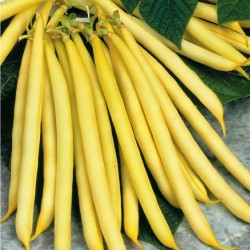

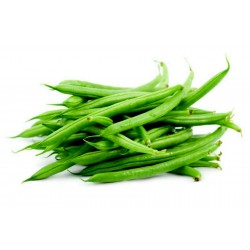

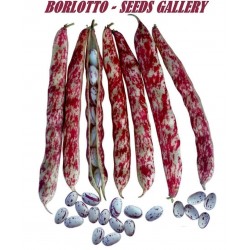
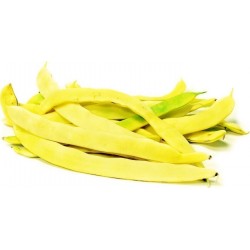
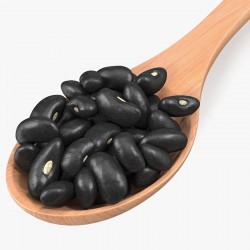
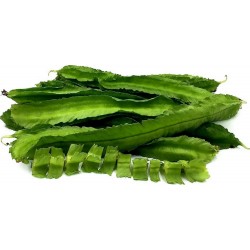
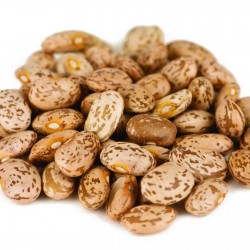
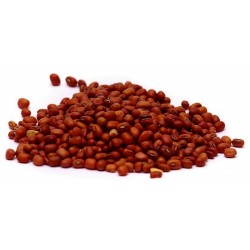


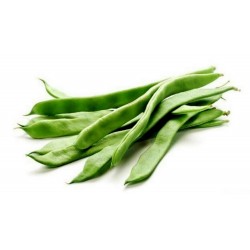

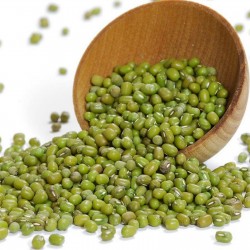
.png)

